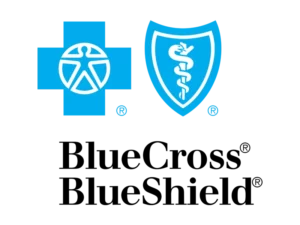Pulling Away After an Argument: Here’s Why Teens Do it

Occasional conflict is a normal part of healthy relationships. During adolescence, arguments with friends and family happen from time to time, but they are usually quickly resolved. Developing strong conflict resolution skills as a teen is an important part of maintaining healthy relationships throughout later life.
However, some teens struggle to cope with interpersonal conflicts and may start to pull away after an argument. While occasional withdrawal is a natural response, when they are consistently withdrawing after conflict, teens may be struggling with a deeper issue.
This article will explore why some teens pull away after arguments and other problematic behaviors related to conflict avoidance. The goal is to help parents identify warning signs of mental health problems and provide guidance on the best treatment options. We will cover:
- What conflict avoidance in teens looks like
- Common peer relationship problems in teens
- Anxiety and depression signs in teens
- Teen behavioral health treatment options

What Is Conflict Avoidance in Teens?
Research shows that adolescents often have strong emotional reactions to interpersonal conflicts.1 These conflicts can be with parents, family members, friends, romantic partners, teachers, and other important people in their daily lives. There are different ways of coping with interpersonal conflict, including both adaptive and destructive behaviors. Some of the most common destructive coping strategies are:1
- Becoming defensive
- Withdrawing from social situations
- Avoiding conflict altogether
There are several reasons why teens withdraw after conflict or avoid conflict altogether. One well-researched factor is the relationship between self-esteem and conflict avoidance.1,2 Adolescents with lower self-esteem tend to give up during difficult arguments because they feel threatened by the situation, overwhelmed by negative emotions, and unable to organize their behavior to resolve the conflict effectively.2
Studies also show that teens who rely heavily on avoidance coping strategies during arguments tend to have higher levels of anxiety and lower levels of cognitive curiosity.2 Social anxiety disorder (SAD), in particular, is often tied to submissive behaviors and avoidance coping during interpersonal conflict.3
Understanding these avoidance coping behaviors can help parents support their child during challenging moments and encourage healthier conflict-resolution strategies.
Common Peer Relationship Problems in Teens
- The level of belonging to the group
- The emotions tied to that friendship group
- The relative importance of the peer group to the teen
In general, teens who strongly want to belong but don’t feel accepted often experience higher levels of social distress.4 A related concept is “ostracism”, which refers to being ignored or excluded by peers.5 While ostracism does not involve direct verbal or physical aggression, it can still have significant negative psychological effects.5
Understanding how belonging and exclusion work can help parents better understand the impacts of different peer relationship problems in teens. For example, teen anxiety and depression are often linked to “social exclusion”, which is a feeling of being shut out from desired relationships or undervalued by important peers. Social exclusion may include behaviors like teasing and gossiping, which are forms of relational aggression.4
If your child is experiencing problems in their peer relationships, the distress can also influence how they act at home. Therefore, feeling undervalued by peers or excluded from social groups can make it more likely that they shut down or pull away during arguments with family members.
What Are Common Anxiety and Depression Signs in Teens?
As explained above, interpersonal conflicts and poor coping strategies can contribute to negative teen mental health outcomes. Below are key anxiety and depression signs in teens that are often tied to interpersonal relationships:
Depression Signs in Teens
Several depressive disorders can appear in adolescence, including major depressive disorder (MDD), persistent depressive disorder (Dysthymia), premenstrual dysphoric disorder (PDD), and recurrent depressive disorder.6 Common behavioral symptoms include irritability, sadness, loss of interest in activities, self-criticism, and social isolation or withdrawal.6 Additional signs may include changes in appetite, sleep problems, trouble concentrating in class, and chronic fatigue.6
In PDD specifically, adolescents may experience increased interpersonal conflict and respond with more avoidance or withdrawal.6,7 These teens may also have more peer relationship problems because symptoms affect how they interact with others. In MDD, higher distress levels often lead to broader social difficulties, such as teen self isolation and emotional shutdown in teens.7
Anxiety in Social Situations and Social Anxiety Disorder
Social anxiety disorder is strongly linked to conflict avoidance and submissive behavior in teens. Adolescents with SAD often struggle with interpersonal communication, especially in the school environment, where they may have trouble getting along with their peers or teachers.8 Generalized anxiety disorder (GAD) in teens can present similarly, suggesting that anxiety in social situations is a symptom common across different anxiety disorders.8
Anxiety in a school environment may be tied to how adolescents believe others perceive their academic performance or behavior. For example, students with both GAD and SAD may assume that classmates will react negatively to their achievements in school. These concerns can heighten fear of embarrassment, leading to avoidance.8
It is also important to note that adolescents with SAD can also show signs of depression, and in more severe cases, may experience suicidal ideation.9 Because depression and anxiety can lead to such serious emotional issues in teens, finding effective treatment options is critical. In the next section, we will explain several approaches that have been shown to support adolescents facing these challenges.
What Are the Most Effective Teen Behavioral Health Treatment Options?
Depending on the specific issues your teen is managing, there will be different recommendations for teen behavioral health treatment options. We will discuss two therapeutic options below that are particularly effective in treating anxiety disorders and depression in teens.
Cognitive Behavioral Therapy (CBT)
Cognitive behavioral therapy (CBT) is typically a short-term, skills-based treatment. It is designed to help teens change problematic beliefs and behaviors that are related to maladaptive emotional responses.10,11 Key components of CBT for social anxiety disorder include:10
- Psychoeducation for both the adolescent and their parents
- Techniques for managing physical reactions
- Cognitive restructuring
- Problem-solving skills to cope with future challenges
A subset of CBT is cognitive behavioral group therapy (CBGT), which integrates exposure activities and social skills training for adolescents in a group setting.10 CBT is also a well-established evidence-based treatment for depression in teens. Some studies indicate that CBT can effectively decrease symptoms of anxiety and depression by up to 70%.11 New advancements in CBT include principles from positive psychology, shifting some focus from problems to strengths, and helping adolescents identify practical solutions for everyday life situations.11
Dialectical Behavior Therapy (DBT)
Dialectical behavior therapy (DBT) is increasingly used to treat depression in adolescents, with research showing positive outcomes.11 The model combines cognitive-behavioral techniques with teen mindfulness practices and acceptance strategies. The goal is to help teens find a balance between acceptance and change.11 One major area of focus in DBT is adolescent emotion regulation, which can help with many depressive symptoms, including self-harm urges and suicidality.
Another core module of DBT is interpersonal effectiveness. By strengthening communication skills and coping strategies for arguments, teens are better equipped to handle interpersonal conflicts without defaulting to avoidance behaviors.12 Additionally, studies have shown that delivering DBT in a multifamily format can provide further benefits for adolescents and their parents.13
There are several other types of evidence-based therapies that can be used to treat depression and anxiety in adolescence, including interpersonal therapy (IPT), rational emotive behavior therapy (REBT), and acceptance and commitment therapy (ACT).10 We have focused here on CBT and DBT specifically because they directly address the issues most connected to help for isolated teens, conflict avoidance, and emotional shutdowns after arguments.

MissionPrep: Providing Personalized Teen Mental Health Programs
If you have been searching for “teen therapy near me”, you may be feeling completely overwhelmed. At Mission Prep, our goal is to make effective teen therapy options as easily accessible as possible. We have outpatient therapy groups focusing on CBT and DBT, as well as residential mental health treatment facilities for teens who need more intensive support.
Whether your child is struggling with social withdrawal, isolation, or conflict avoidance, we have the resources to connect your family with the right level of care. Contact us today to speak to one of our team members who can help you determine which treatment approach is right for your child.
References
- Borecka-Biernat, D. (2022). Avoidance Coping Strategy in Adolescents in a Social Conflict Situation with Respect to Cognitive Correlates. INSTED: Interdisciplinary Studies in Education & Society, 24(2), 85-101. https://doi.org/10.34862/tce/2022/12/22/cd6x-nw58
- Borecka-Biernat, D. (2025). Cognitive and Emotional Predictors of Avoidant and Task-Oriented Coping Strategies in Adolescents during Social Conflict. Psychologia Wychowawcza, 73(31), 42-60. DOI: 10.5604/pw.2523
- Russell, J. J., Moskowitz, D. S., Zuroff, D. C., Bleau, P., Pinard, G., & Young, S. (2011). Anxiety, emotional security and the interpersonal behavior of individuals with social anxiety disorder. Psychological medicine, 41(3), 545-554. doi:10.1017/S0033291710000863
- Newman, B. M., Lohman, B. J., & Newman, P. R. (2007). Peer group membership and a sense of belonging: their relationship to adolescent behavior problems. Adolescence, 42(166). Retrieved from http://www.ncbi.nlm.nih.gov/pubmed/17849935
- Williams, K. D., & Nida, S. A. (2011). Ostracism: Consequences and coping. Current directions in psychological science, 20(2), 71-75. DOI: 10.1177/0963721411402480
- Bernaras, E., Jaureguizar, J., & Garaigordobil, M. (2019). Child and adolescent depression: A review of theories, evaluation instruments, prevention programs, and treatments. Frontiers in psychology, 10, 543. https://doi.org/10.3389/fpsyg.2019.00543
- Rao, U., & Chen, L. A. (2009). Characteristics, correlates, and outcomes of childhood and adolescent depressive disorders. Dialogues in clinical neuroscience, 11(1), 45-62. DOI: 10.31887/DCNS.2009.11.1/urao
- Kajastus, K., Haravuori, H., Kiviruusu, O., Marttunen, M., & Ranta, K. (2024). Associations of generalized anxiety and social anxiety with perceived difficulties in school in the adolescent general population. Journal of Adolescence, 96(2), 291-304. DOI: 10.1002/jad.12275
- Chiu, K., Stringaris, A., & Leigh, E. (2025). Social anxiety symptoms and their relationship with suicidal ideation and depressive symptoms in adolescents: A prospective study. JCPP advances, 5(1), e12249. https://doi.org/10.1002/jcv2.12249
- Kara, A. (2022). Current treatments for social anxiety disorder in adolescents: A narrative review. Unico’s Review, 1(1-2), 5-10. https://doi.org/10.5281/zenodo.7365354
- Othman, N. P., Muhamad, S. N., & Aisyah, S. (2024). Integrated Approaches to Depression Treatment: A Review of Common Methods and their Effectiveness. DOI:10.6007/IJARBSS/v14-i9/22404
- Harned, M. S., Korslund, K. E., Schmidt, S., & Gallop, R. (2021). The dialectical behavior therapy adherence coding scale (dbt acs): psychometric properties. Psychological Assessment, 33(6), 552-561. https://doi.org/10.1037/pas0000999
- Catalina, A., Diana, L., Clavijo, B., Mar, A., Luisa, F., Antonio, N., Juliana, R., Sara, Y. V. (2023). Effectiveness of Dialectic Behavioral Therapy in Adolescents (DBT-A) in the treatment of depression and emotional dysregulation: A Colombian prospective cohort study. doi: 10.21203/rs.3.rs-3617181/v1













